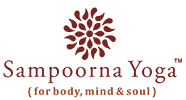The Art of Teaching: Your Guide to Yoga Teacher Training Courses
Looking into yoga teacher training courses? Trying to find the best yoga teacher training course (YTTC) that will give you a strong foundation for your teaching journey? With no dearth of yoga teacher certification programs, your choices are limitless. In this article, we’ve put together a simple guide to yoga teacher training courses and how to get started on this path.

WHAT DO YOU NEED TO TEACH YOGA?
Just like any other career or job, to begin teaching yoga you need to have a basic certification in place, that is, the 200-hour yoga teacher training certification. Think of this first level as a graduate degree you need to begin your career. The basic 200-hour YTTC will teach you beginner-friendly asanas, pranayama and meditation techniques, introduction to anatomy and physiology in yoga, yoga philosophy and other important techniques like Shat Karmas (six cleansing techniques). After completing the 200-hour YTTC, you can either start teaching or take up advanced programs like a 300-hour YTTC, or even do a few certification courses to specialize in areas like Yoga Nidra and pranayama, among others.
YOGA ACCREDITATIONS AND WHAT IS YOGA ALLIANCE?
Yoga Alliance is an independent registration body for schools and individuals. In order to meet the criteria of a registered yoga school, a Yoga Alliance certified school must follow a set list of standard guidelines. This includes having a certain number of hours for both practical and theory sessions like anatomy, teaching methodology, philosophy, ethics, etc. Schools submit their curriculum for review and Yoga Alliance reviews the same to ensure it meets a certain standard.
If you do a teacher training course with a Yoga Alliance registered school, you will automatically be able to register as a teacher too. This gives you the opportunity to be accredited by a globally recognized body and to teach anywhere in the world. There are other registered bodies, but Yoga Alliance is the largest and most recognized one.
WHAT DO YOGA STUDIOS LOOK FOR IN TEACHERS?
After completing your certified yoga teacher training, you can begin teaching immediately. If you choose to work full-time or freelance with a studio, here are a few things they will look for:
- Which style of yoga are you certified or experienced in – Hatha yoga, Vinyasa, Ashtanga, Yin yoga, etc.
- Is your yoga instructor certification from a Yoga Alliance registered yoga school?
- Do you have the knowledge and experience of taking a holistic class with asanas, pranayama and meditation?
- Which age group are you comfortable teaching?
These are just a few examples. If there is a specific studio you are interested in working with, you can always reach out directly to know what their criteria is.
WHAT DO PRACTITIONERS LOOK FOR IN TEACHERS?
Not looking at teaching with a studio but planning to start your own classes? When students are on the hunt for a good yoga class to join, they’re looking for authentic, credible and trustworthy teachers. Even if you’re just starting out, showcase your yoga certifications (perhaps on your social media channel or website), mention the school you got certified from and highlight your Yoga Alliance registration (or registration with other bodies). Create a portfolio or social media page that shows you doing asanas or features short videos of pranayama practices. The idea is to highlight to students your knowledge and experience of yoga, even if your teaching hours are minimal initially.
WHAT IS THE DIFFERENCE BETWEEN ONLINE AND IN-PERSON COURSES?
Since the pandemic in 2020, yoga schools worldwide have introduced online yoga teacher training courses to make yoga accessible to everyone. The demand for online YTTCs has continued due to its core benefit of being flexible and often self-paced. The curriculum for online and offline courses is almost the same across schools. The main difference is the schedule. In-person yoga teacher training courses have a specific schedule over a period of 1-2 months. The schedule is generally intensive, with classes throughout the day if it is a residential course. Other formats (for longer courses), where a course runs for months together, will have fewer hours a few times a week or perhaps weekend sessions.
On the other hand, online courses have live sessions only for 2-3 hours a day normally or are self-paced with a few live sessions throughout the program duration. Because of this there tends to be more interaction with teachers and students in in-person courses. This creates more room to connect and bond with a community of like-minded folks.
Another difference is in the practical aspect. When doing asanas, especially challenging ones, in in-person courses you’ll have the option for hands-on adjustments from teachers and the support of fellow students. There is more opportunity to try other practices, like cleansing techniques, under a teacher’s guidance too. Online courses might not deep dive into challenging poses or complex cleansing techniques for safety reasons.
WHAT SHOULD YOU CONSIDER IF CHOOSING AN ONLINE YOGA TEACHER TRAINING COURSE?
When choosing an online program, look into aspects such as reviews and testimonials from previous students. Has the yoga teacher training program you’re considering received positive feedback from past students? Is the course robust and does the curriculum cover practicals and theory? Are there live discussions regularly where you can interact with teachers and students? Are there experienced teachers for specific subject matters such as anatomy or pranayama or philosophy? How much support do you get from teachers during the course? How can you communicate with teachers – email, live sessions, etc? Look at connecting with past graduates to know how the course helped them start their teaching career. If community is important for you, find a course that has support factors like a students group or alumni group you can join to network with more yogis. Don’t be afraid to ask as many questions as you wish to. It’s important to make an informed decision.
HOW TO DECIDE BETWEEN ONLINE AND OFFLINE COURSES?
The main factor to consider between online and offline is your time and flexibility. In-person yoga teacher training courses are great if you can spare the time from your day-to-day responsibilities to attend classes every day/week or do a residential course. If you cannot take time off and require something more flexible or self-paced, then online yoga teacher training courses are the perfect option. You can also consider other factors such as practicing with the support of others, community, interaction with teachers and students, etc. Based on what is your priority, you can make your choice.
WHAT TO DO AFTER COMPLETING YOUR YOGA CERTIFICATION?
After completing your 200-hour yoga teacher training program, you can go on to advanced courses and continuing education programs (gets you brownie points with Yoga Alliance) to continue upskilling and expanding your knowledge and expertise. The more you learn and practice, the more you can give to students.
You can start teaching on your own, join a studio or fitness center or choose to hold workshops and retreats. You can even take 1:1 yoga classes or offer corporate programs, teach in schools or health centers. The options are plenty and there is immense opportunity out there.
A yoga teacher training program truly has the power to change the trajectory of your life, personally and professionally. It’s the beginning of a new path and a very real transformation, so take your time choosing the right course, format and how you wish to start teaching. Rest assured, you will make friends on the same path and meet teachers who will go on to become mentors for life, so you’ll have your squad cheering you on and supporting you throughout.
YOGA ALLIANCE REGISTERED YOGA TEACHER TRAINING COURSES

Sampoorna Yoga Teacher Training School has been a registered international yoga school with Yoga Alliance, holding RYS-200, RYS-300, RYS-500, and YACEP designations since 2009. Its online and in-person Yoga Teacher Training Courses and Certifications are recognized and accepted worldwide, enabling all graduates to teach globally. Upon course completion, participants receive a 200-Hour, 300-Hour, or 50-Hour Yoga Teacher Training Certification, allowing registration as RYTs (Registered Yoga Teachers) with Yoga Alliance. Our Yoga Teacher Training Certificate Courses empower you to teach legally in any country, whether you choose to register with Yoga Alliance registration or not.

